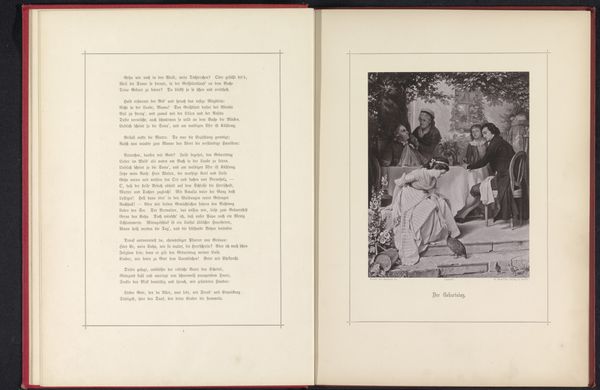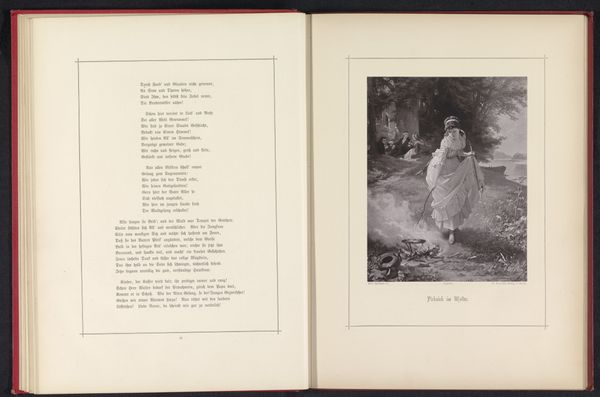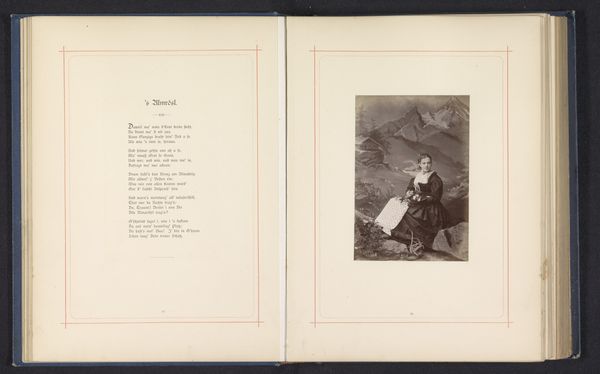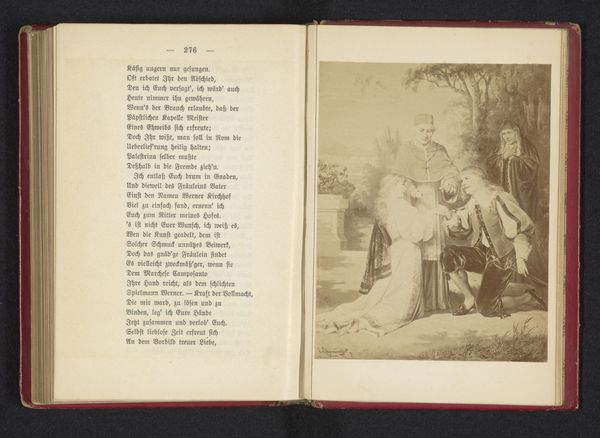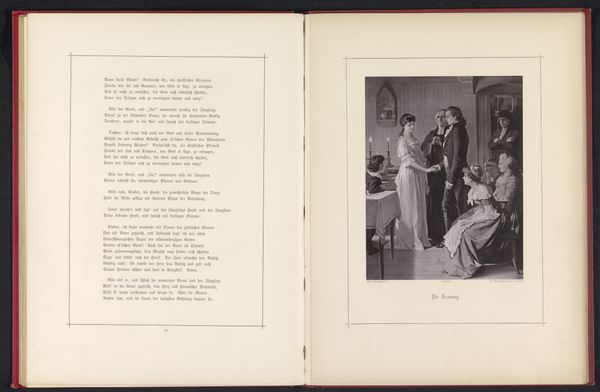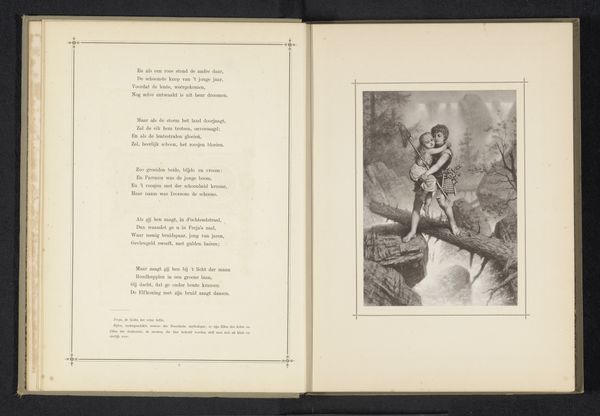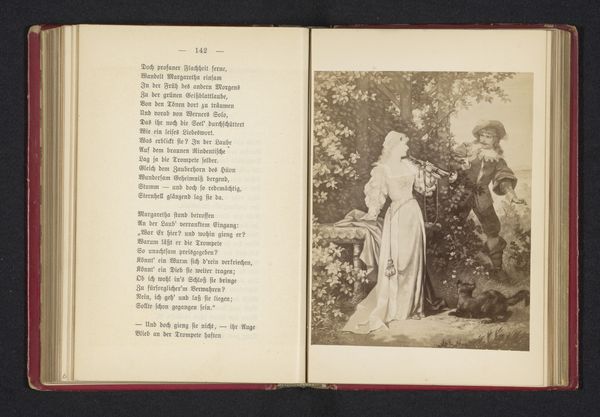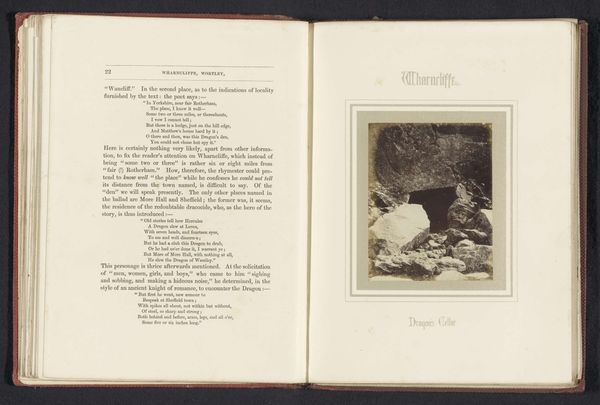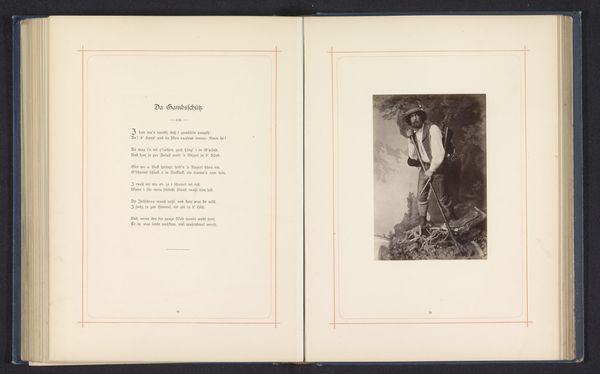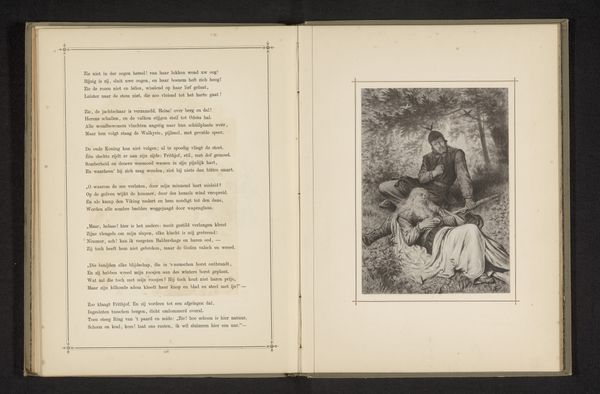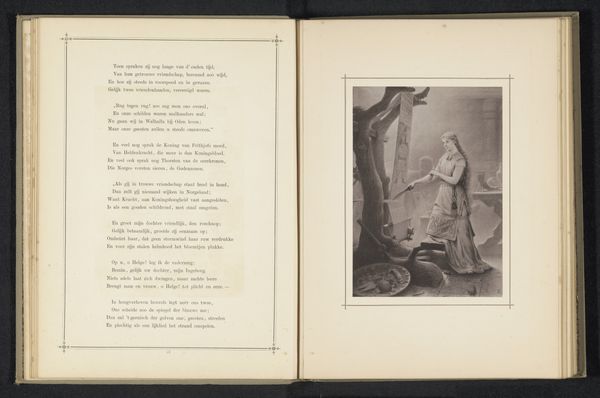
Fotoreproductie van een schilderij van een jonge man en vrouw die een houten hek passeren before 1884
0:00
0:00
Dimensions: height 201 mm, width 158 mm
Copyright: Rijks Museum: Open Domain
Editor: Here we have a print dating back to before 1884, a photographic reproduction of a painting titled "Fotoreproductie van een schilderij van een jonge man en vrouw die een houten hek passeren". The title is a mouthful! I'm struck by its genre scene vibe. What do you see in this piece that maybe isn't immediately apparent? Curator: Well, let's think about photography as a means of reproduction. This image presents a painting—likely romantic, given the landscape—for wider consumption via print. The choice of photography flattens the brushstrokes, emphasizing texture. Look closely—do you see how it almost democratizes art production? Suddenly, access to a painted scene isn’t just for the wealthy. What does that signify regarding material culture and artistic value? Editor: So, you're saying that by making it a photograph and distributing it as a print, they changed how art was consumed, making it less elite? I see, it focuses attention less on the individual skill of the painter and more on the reproduction process, and who now had access. Curator: Exactly. And think about the material realities. Paper and photographic chemicals were becoming increasingly industrialized, transforming not only art but also communication itself. Consider who owned those factories, who labored within them? How did the means of producing art support or contradict the image of romantic escapism depicted? Editor: Wow, I hadn't thought about it like that! It's fascinating to consider the layers of production behind a seemingly simple image. Curator: Indeed. By looking at the materials and their contexts, we reveal deeper narratives embedded within the work. Editor: Thanks for highlighting how focusing on the materiality provides an entirely new level of insights.
Comments
No comments
Be the first to comment and join the conversation on the ultimate creative platform.
